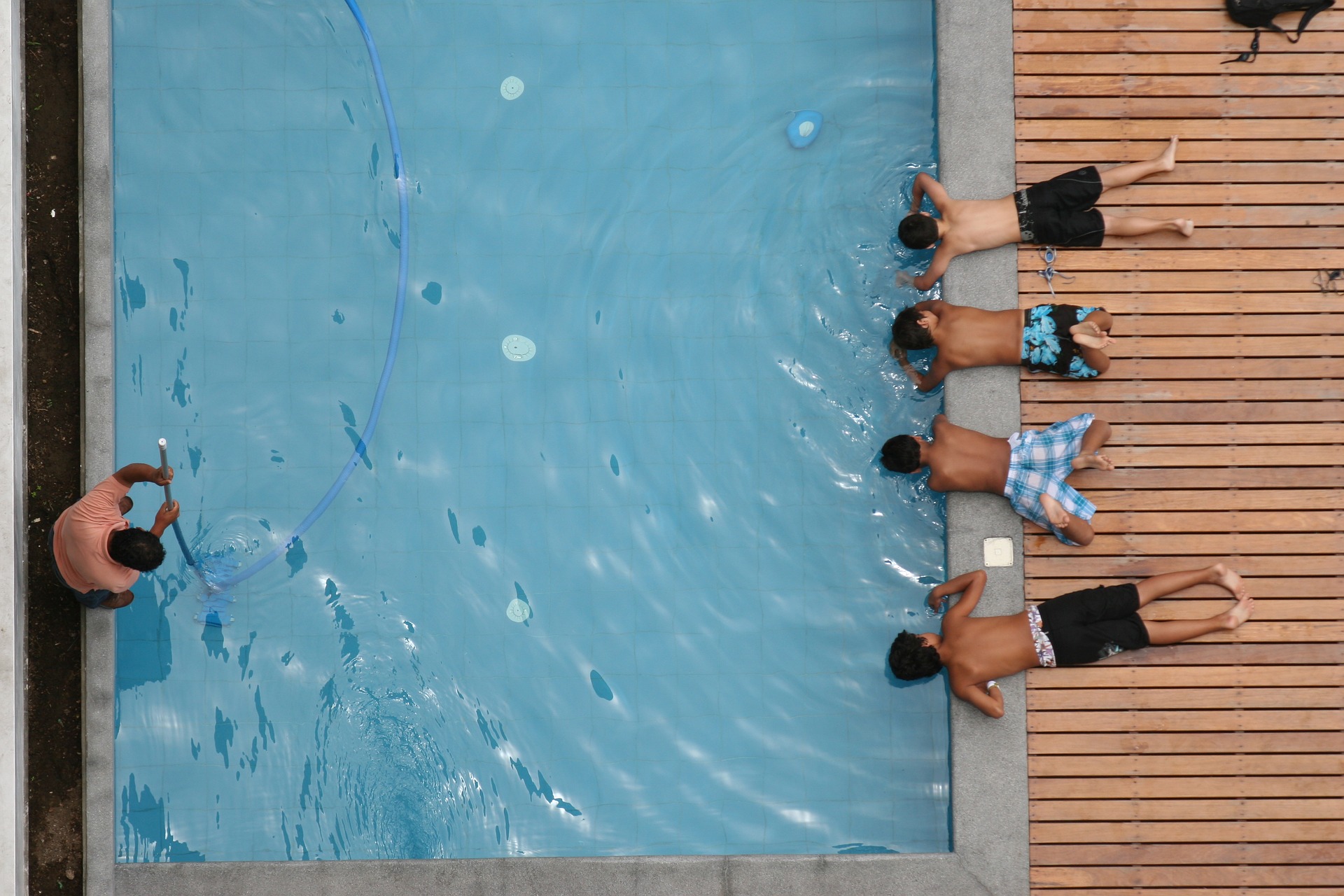Backyard Swimming Pools – planning the depth and size for your swimming pool

In these modern times, having a pool in your backyard is often more of a status symbol than anything else. However, a swimming pool can be much more than a way to show off your wealth and affluence. If you are planning on building a swimming pool, big or small, for yourself and your family, you must make sure to properly determine the type and size of the pool suits your personal needs. If the aim is to build a pool for purely recreational purposes, the only important aspect to consider would be to build a shallow pool any shape and size.
However, to have a pool that allows you to practice swimming laps, you need to build your pool with straight sections along parallel ends. In case you want to build a pool in your backyard so that you can make swimming an integral part of your daily workout, you don’t really need elaborate building plans, as a simple swim spa will do the trick for you.
Choosing swimming pool depth and size

Recreational swimming pools are not too challenging to build if the aim is to have a pool for children and adults alike. Not too much detailed planning is required in the case of a recreational pool. It’s usually adequate if the pool is built on a sloped floor with a minimum depth of 36 inches which increases to perhaps as deep as 5 or 6 feet at a maximum. It is entirely at the discretion of the homeowner to have a pool that suits their individual requirements. The shape of a recreational pool can also be any kind, and most people will choose a shape for their pool that is consistent with the overall look of their home and is aesthetically satisfying.
However, when it comes to building a pool for much more athletic activities in mind, then detail matters. Athletic lap swimmers would ideally love to have a pool which has a good depth, is long and narrow. The depth ensures swimmers don’t touch the bottom every time they are trying to practice their laps. If athletes are going to practice in the pool for competitive sports, a length of 25 yards is a must, since this will enable them to develop their skills and prepare adequately for any competitions.
If you are planning to have a pool which is suitable for both recreational and athletic activities, your best bet would be to go for a more hybrid kind of pool that combines the aesthetics of a recreational pool with the dimensions of an athletic pool. An L-shaped pool is an ideal hybrid pool, one that contains a shorter shallow area for recreation while leaving the larger area with precise dimensions designed for lap swimming so the athletes can train for competitions.
Choosing the best possible shape for your pool

In most cases, simple geometric shapes such as circles, ovals, squares, and rectangles are your best options. These shapes are ideal for not only complementing the landscape but are also an enhancing factor with regards the appearance and value of your property. In almost all suburban neighborhoods, you will find backyard pools with one of the above mentioned shapes.
Contrary to popular belief, a rectangular pool is considered much more expensive to build than a more oval or circular shaped pool, although this can vary since different builders have their own understanding of the cost based on the perimeter of the swimming pool. It can often be a challenge to successfully incorporate a pool any given shape and size with the already existing property. However, it eventually comes down to personal taste and the requirements of the individual as to what shape they think compliments their property.
Installing a sufficient patio around the pool

In case your builder or architect neglects to consider the significance of the patio, make sure you make them aware of the fact that building a patio or some extra space around your swimming pool will significantly enhance the functionality and accessibility of your pool. Failing to do so can potentially cause unwanted nuisances in terms of people slipping and injuring themselves, along with inadequate spillage control.
People will approach the pool from the outside, so the area around the pool is as important as the vicinity of the pool. A properly designed patio will minimize the amount of dirt entering your pool and will catch any spills and over flooding of the pool water.
If you have any comments then please drop us a message on our Outdoor Revival Facebook page
If you have a good story to tell or write a blog then let us know about it on our FB page. We’re also happy to receive article or review submissions and we’d love to hear from you.
We live in a beautiful world, get out there and enjoy it. Outdoor Revival – Reconnecting us all with the Outdoors.
